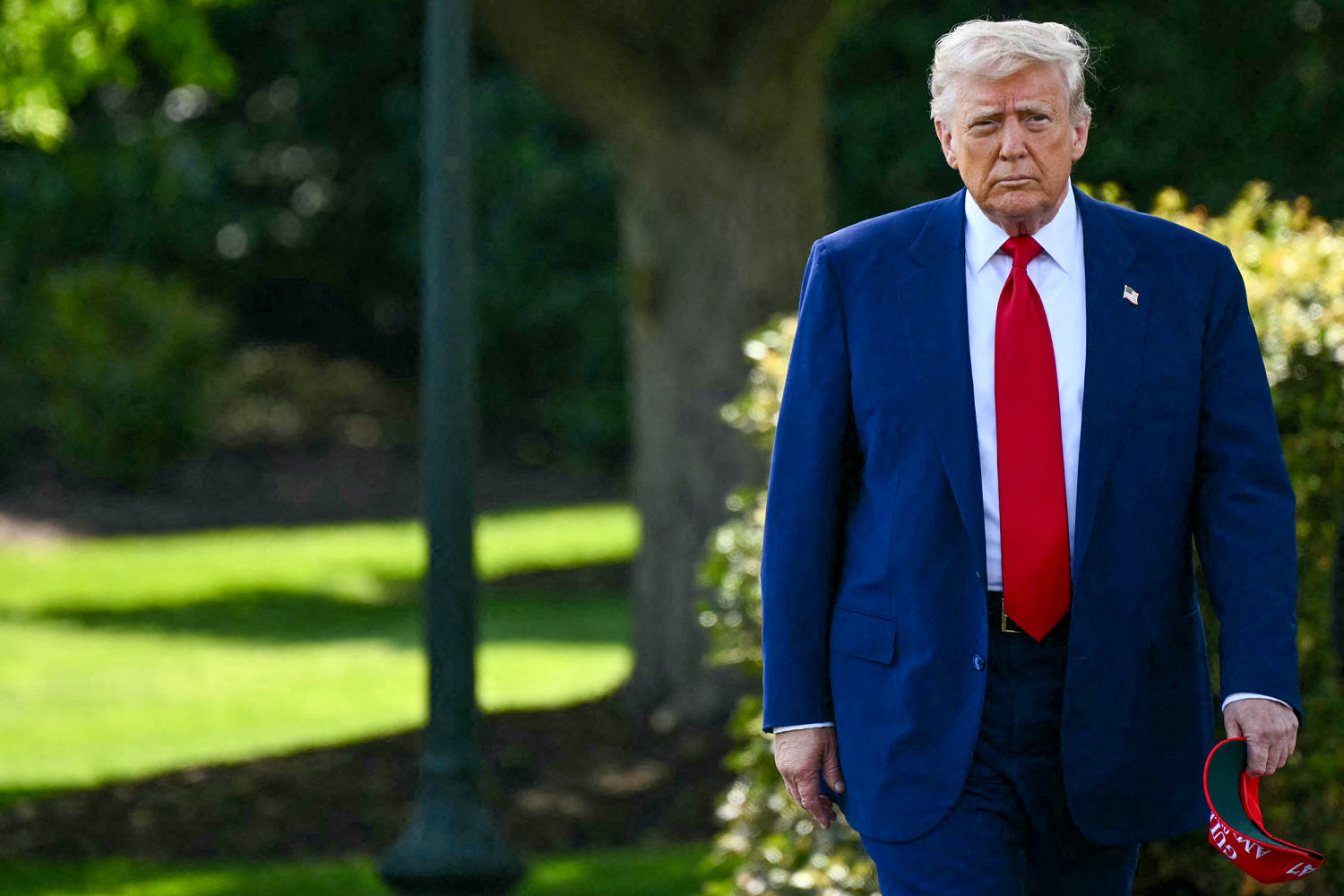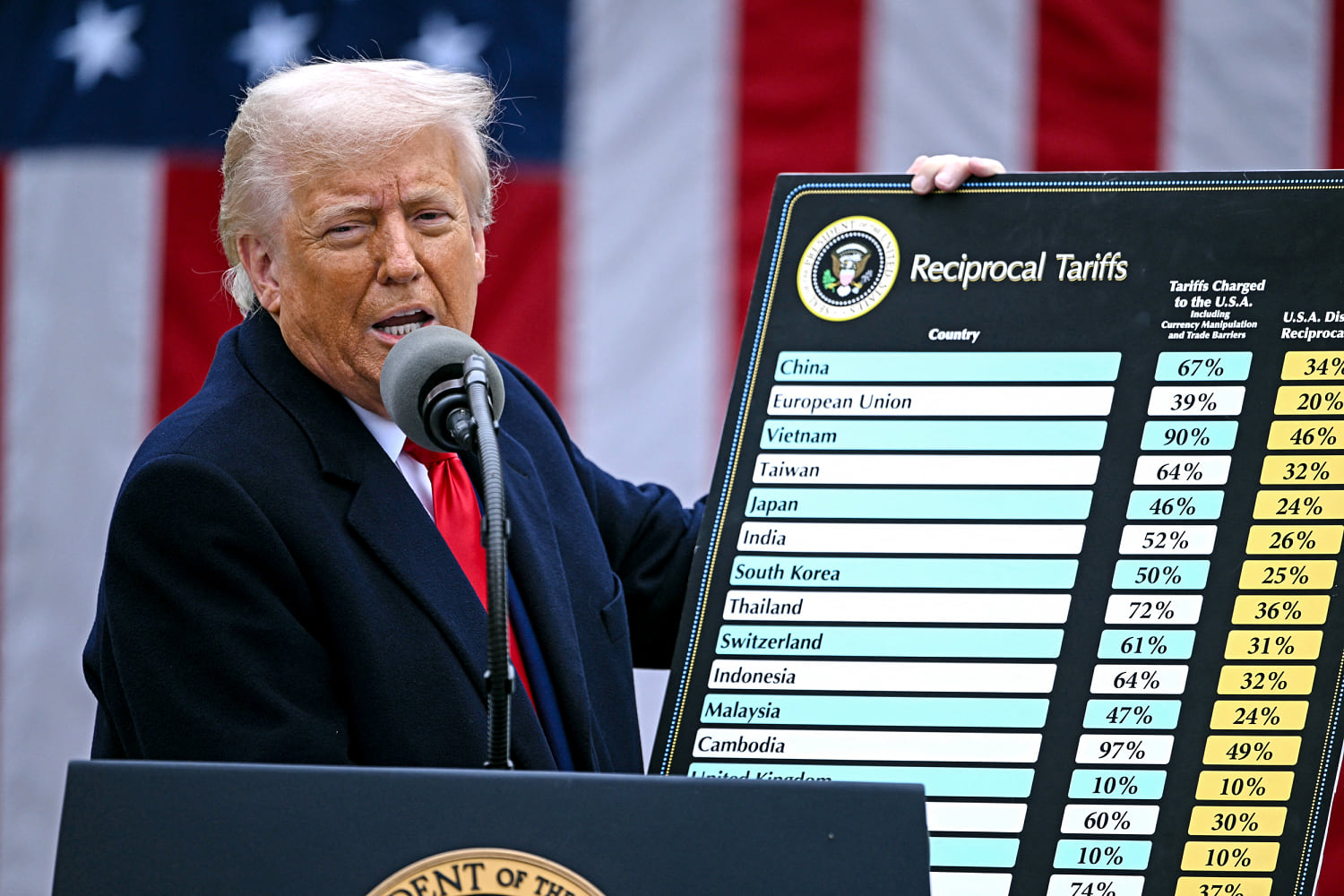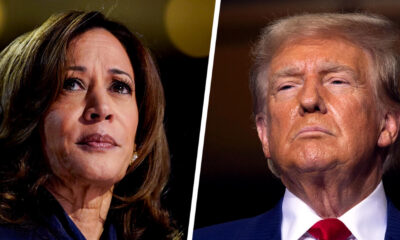The Dictatorship
GOP Senator tries to protect the right to be antisemitic in bill to prevent antisemitism

On Wednesday, the Senate Health, Education, Labor and Pensions Committee took up a bill on antisemitism with a remarkable last-minute amendment from committee Chair Bill Cassidy of Louisiana: protection for the right to say that Jews killed Jesus.
That bill — the Antisemitism Awareness Act — would codify the International Holocaust Remembrance Alliance’s definition of antisemitism as the sole definition to be used by the Department of Education when investigating allegations of antisemitic discrimination.
Trump is weaponizing, distorting, and exploiting the reality of antisemitism to attack academic freedom.”
Rep. Jamie Raskin, D-Md.
Since 2018, the Education Department has used the IHRA’s definition — which the organization itself describes as “non-legally binding” — as a tool to think through thorny subjects around antisemitism. But elevating it to the only definition under the law, some critics (admittedly including me) warn, would lead to it being used to conflate anti-Zionism with antisemitism.Of the 11 examples of antisemitism the IHRA definition offers, six are about Israel. “Denying the Jewish people their right to self-determination, e.g., by claiming that the existence of a State of Israel is a racist endeavor,” reads one example. There are many Jews to whom that is indeed a deeply offensive statement. But let’s say a Jewish studies professor writes that she’s abandoning Zionism because she’s come to believe that its application in real life is effectively racist. Would that professor have broken the law, if the law of the land is IHRA? Is she an antisemite, making campus less safe for her students?
These warnings — that this definition, if made law, could be used to chill free speech and criticism of Israel — predate Trump’s second term. For the bill’s critics and even some former supporters, however, the warnings have taken on a new urgency given that the Trump administration is already detaining and attempting to deport student activists for their criticism of Israel. As Rep. Jamie Raskin, who voted for the bill last spring, put it Tuesday“Trump is weaponizing, distorting, and exploiting the reality of antisemitism to attack academic freedom … the Senate should oppose Trump’s further transparent moves to undermine American democracy under the banner of opposing antisemitism.”
But when this legislation came before the House last spring, there was another line of criticism, too: Some of the 21 Republicans who voted against it, including Rep. Marjorie Taylor Greenedid so because one example from the IHRA says that it is antisemitic to accuse Jews of killing Jesus. The trope is widely considered antisemiticbut to these Republicans, not being able to say so infringed on their religious liberty. Which brings us to Cassidy’s “manager’s amendment,” introduced the day before the committee meeting. The bill’s original text, as introduced by Sen. Tim Scott earlier this year, said, “Nothing in this Act shall be construed to diminish or infringe upon any right protected under the First Amendment to the Constitution of the United States.” At the end of that sentence, Cassidy’s amendment added, “including the free exercise of religion.” As the Forward notedthe “language on religious liberty could reassure Republicans that their rights as Christians won’t be violated and potentially secure their votes.”
The legislation fits perfectly with the Trump administration’s broader approach to fighting antisemitism.
Though Wednesday’s markup failed and the committee adjourned without voting on the bill, Cassidy’s amendment, at time of this writing, remains in the text. This language gives the game away.I think it’s obviously antisemitic to say that Jews killed Jesus (at the risk of being anti-Roman, that was on them). I also, however, understand that Christians are within their constitutionally protected rights to say so.
Likewise, I’m sure there are many who felt that a 2024 essay from historian and Israel Defense Forces veteran Omer Bartov outlining how his research of Nazi Germany informed his concerns about Israel, was antisemitic. Indeed, that article would likely have been in breach of the IHRA’s definition, which includes the example of “drawing comparisons of contemporary Israeli policy to that of the Nazis.” That does not mean it should be illegal.
The Cassidy carve-out, however, corrected for only one of the two. In doing so, it revealed that this legislation, if passed, would not be used to tackle antisemitism across the political spectrum, but would focus specifically on the political left and criticism of Israel.
In this way, the legislation fits perfectly with the Trump administration’s broader approach to fighting antisemitism, including its attempted deportations of students it deems terrorist sympathizers. That approach, many have observedseems to be following Project Esther, a blueprint published last fall by the rightwing Heritage Foundation. As the Forward reported when Project Esther was unveiled, the blueprint was written largely without input from Jewish groups and focused solely on antisemitism from the political left (including Jewish Voice for Peace) and in fact accused American Jews of “complacency.”To put it another way: A plan to fight antisemitism grounded in reality and an actual desire to protect Jewish safety would protect the pluralistic liberalism that has allowed American Jews to thrive in this country. It would recognize that antisemitism can be found along and across the political spectrum. And it would acknowledge that rising Christian nationalism is a particular threat to our ability to participate fully in society as Americans and as Jews. On the other hand, a plan to fight antisemitism that is actually about boosting Christian nationalism while chilling speech around Israel would look a lot like what the Trump administration is doing, bolstered by legislation that renders free speech illegal — unless it’s to say that Jews killed Jesus.
The Dictatorship
US inflation cools and Americans step up spending as they brace for tariff impact

WASHINGTON (AP) — A closely watched inflation gauge cooled last month in a sign that prices were steadily easing before most of President Donald Trump’s tariffs were implemented.
At the same time, consumers accelerated their spending, particularly on cars, likely in an effort to get ahead of the duties.
Wednesday’s report from the Commerce Department showed that consumer prices rose just 2.3% in March from a year earlier, down from 2.7% in February. Excluding the volatile food and energy categories, core prices rose 2.6% compared with a year ago, below February’s 3%. Economists track core prices because they typically provide a better read on where inflation is headed.
The slowdown in inflation could be a temporary respite until the widespread duties imposed by Trump begin to push up prices in many categories. Most economists expect inflation to start picking up in the coming months.
“Core inflation will inevitably rebound sharply in the coming months,” Harry Chambers, assistant economist at Capital Economics, said in an email. “Goods prices will rise much more strongly.”
Chambers expects core inflation will near 4% by late this year.
Wednesday’s report also showed that consumer spending increased 0.7% from February to March, a healthy gain. Much of the increase appeared to be driven by efforts to get ahead of duties, such as Trump’s 25% duty on imported cars, which took effect April 3. Spending on autos surged 8.1% in March. Still, that means auto sales are likely to fade in the coming months because those assets have already been secured.
But spending on restaurants and hotels also jumped after falling in February, a sign Americans are still willing to splurge a little on travel and dining out.
The spending increase is noteworthy because consumer confidence surveys have plunged for several months, suggesting Americans have grown increasingly worried about the economy. Yet so far, that hasn’t translated into a noticeable slowdown in spending.
Yet many economists expect it will come soon. Some businesses are already seeing it, including some airlines.
And Sheryl Tubbs, an Idaho-based creator behind DenimFelt, which converts secondhand denim into stuffed animals and puppets, opened her Etsy shop in late 2019 as a way to supplement her husband’s income. She buys supplies like boxes, buttons and thread from Chinese sellers on Amazon and benefited from the fact that small shipments from overseas have been exempt from tariffs, under what’s known as the “ Minimis exemption.” But the Trump administration has now closed that loophole.
Prices for the supplies she buys from China are already rising. On top of that, sales dropped 50% over the past month as her customers pulled back. She will have to raise prices by a dollar or two on her items, which average about $50. But she’s also coming up with new ways to market her business like selling at a local festival and digitizing her patterns so she can sell them.
“I definitely have to be more creative and come up with better ways of doing it to compete,” she said.
Earlier Wednesday, the government reported that consumer spending slowed in the first three months of the year, compared with last year’s final quarter, as bad weather depressed shopping and Americans took a breather after healthy spending over the winter holidays.
The nation’s economy actually shrank 0.3% in the January-March quarter as imports surged as companies sought to get ahead of Trump’s tariffs.
Trump benefited in last year’s election from broad dissatisfaction among voters about the steep rise in prices that began in 2021 and that, on average, pushed prices up about 25% by the middle of last year. Grocery costs shot up nearly 30%. As a candidate, Trump said he would immediately lower prices if elected.
Yet the president has slapped 25% duties on steel and aluminum, as well as carsand a 10% tariff on nearly all other imports. And China, the United States’ third-largest trading partner, now faces a 145% duty on its exports.
The inflation-fighters at the Federal Reserve target a 2% inflation rate and pay close attention to Wednesday’s inflation gauge, known as the personal consumption expenditures price index. The better-known consumer price index was released earlier this month and also showed a steady decline.
Inflation figures were revised higher for January and February, leaving price increases in the first quarter higher than previously estimated. The higher figures would likely leave Fed officials wary of cutting rates soon even before taking tariffs into account.
Trump has pushed the Fed to cut its key short-term interest rate because inflation has cooled. But Fed Chair Jerome Powell has underscored that the central bank is likely to remain on the sidelines as officials gauge how tariffs will impact the economy. The Fed isn’t expected to lower its rate at its policy meeting next week.
__
AP Retail Writer Anne D’Innocenzio contributed to this story from New York.
The Dictatorship
The real lesson for Trump in today’s disappointing GDP report

Wednesday morning, we learned that the U.S. economy contracted slightly in the first quarter of 2025. Real gross domestic product was down 0.3%a minor contraction but a large step down from the prior quarter’s GDP growth rate of 2.4%.
The negative impact of the tariffs, in particular, comes through clearly in the report.
Ever since President Donald Trump launched his trade war and his attacks on Federal Reserve independenceall accompanied by chaotic policy lurching, surveys of consumers and businesses have shown sharp drop-offs in confidence and sharp increases in expectations of higher inflation. Financial markets, of course, have been battered about, rising when the administration dials back the tariffs and vice versa. We’ve all been on some degree of pins and needleswaiting to see whether another self-inflicted wound is incoming.But for all that angst, until today, we didn’t see much impact of the president’s actions in the so-called hard data, meaning the numbers we get about the economy’s performance from the statistical agencies.
That’s why this GDP report is so important. The negative impact of the tariffs, in particular, comes through clearly in the report, which shows data only from January to March. So the report isn’t even reflecting the long list of “reciprocal tariffs,” currently on pause, that were announced on April 2.
One number from the GDP report embodies this impact: The trade balance took a huge dive in Q1, subtracting 4.8 percentage points from the growth rate. In a data series that goes all the way back to 1947, we’ve never seen a larger negative impact from trade in one quarter.
OK, that’s dramatic. But what does it mean?
There’s no mystery here. It means that consumers and businesses got very busy in January through March trying to front-run the tariffs, pulling forward spending that they normally would have spread across the year. In fact, we saw this coming. An earlier release of retail sales for March showed car and truck purchases getting a big bounce.And it’s not just imports. People and businesses are reasonably worried that tariffs will boost prices of domestic goods, which, as I’ve stressed on this pageoften include imported parts. Business equipment investment, including computers and software, was a bright spot in the report, up over 22%. But if those purchases were also pulled forward — and given the large spike in inventories, this appears to be the case — it implies that future quarters could come in even weaker. More spending now, less spending later.
Does this mean we’re in a recession? Definitely not. One bad quarter doesn’t make a new trend. The import spike (a historically large negative) and the inventory spike (a large positive) are based on incomplete data that will be fleshed out more in coming months. And while consumer spending slowed to 1.8% in Q1 of 2025 from a much stronger 4% in Q4 of 2024, that’s still a decent growth rate for this key GDP component, enough to keep the economy above stall speed.
We’ve all been on some degree of pins and needles, waiting to see whether another self-inflicted wound is incoming.
But this is a worrisome report. It syncs up all too well with what we’ve been hearing about how folks are feeling about the Trump economy, which is now polling underwater. It shows that Americans are highly attuned to, and quite well-informed about, the impact of the trade war on their living standards and are trying to get ahead of it.It also shows something else. I’ve been tracking these reports for decades now, and I’ve gotten pretty good at sniffing out what’s signal and what’s noise. And I can still feel a pulse, a pretty strong one, in the U.S. macroeconomy. The Trumpian chaos has clearly taken a toll on growth, as that topline minus-0.3% shows. But the chaos hasn’t yet broken the fundamentals. The job market’s still pretty robust; even with new inflationary pressures, real wage growth is still up.
If the administration were to stop now, to declare victory in the trade war (there’d be no actual victory, but when has that mattered to Trump?) and to send a clear message, one that they actually stick to, that they’re not going to reverse course tomorrow, there’s still time to dig out of the mess it has put us in. The hole isn’t yet too deep.
But I fear it won’t do so, and if I’m right, then we will likely remember this report as one of the first examples of the hard data starting to look just as bad as the soft data.
Jared Bernstein
Jared Bernstein was chair of President Joe Biden’s Council of Economic Advisers.
The Dictatorship
Trump administration’s plans for tariff relief are a tacit admission of failure

President Donald Trump’s plans to offer tariff relief to various industries being harmed by his haphazard and destructive trade war seems like overwhelming proof that this was a disastrous, ill-conceived idea from the beginning.
The Trump administration has floated the idea of offering farmers subsidies (essentially, government welfare being proposed by the purportedly anti-welfare party) to help them cope with rising costs and foreign nations pulling back on purchasing American-made goods. And on Tuesday, Trump signed two executive orders shielding automakers from some tariffs and allowing them to apply for relief over the next two years — although some experts say that won’t be long enough. Trump also exempted some electronic devices from tariffs earlier this month, though his administration says those exemptions will only be temporary.
It’s as if Trump has blown several holes in the U.S. economy and he’s trying to plug them all with his fingers to stop it from leaking out.
It’s as if Trump has blown several holes in the U.S. economy and he’s trying to plug them all with his fingers to stop it from leaking out. And his varying justifications for why the tariffs are supposedly necessary means there’s no telling when this trade war against the rest of the world will end.
For example, Trump has claimed that tariffs — at least on China, Mexico and Canada — were about stemming the flow of fentanyl into the United States. He has absurdly said that tariffs are about raising revenue to replace the federal income tax. And he has argued that tariffs are about bringing manufacturing back to the United States in a sizable way — even though economists say they will do no such thing.
And all of these justifications appear meaningless at the moment, given that the tariffs don’t seem to be forcing countries into the quick negotiations the president and his Cabinet have said would arise. Trump promised that dozens of trade deals would come to fruition before his 90-day pause on tariffs comes to a close, and, as of this writing, not a single one has been announced.
Meanwhile, some experts expect to see the worst impacts in the months ahead. Things clearly aren’t going as the Trump administration had anticipated, and the fact the president is offering relief (however insufficient) from the pain he is single-handedly inflicting on American businesses is a sure sign of that.
-

 The Josh Fourrier Show6 months ago
The Josh Fourrier Show6 months agoDOOMSDAY: Trump won, now what?
-
Uncategorized6 months ago
Bob Good to step down as Freedom Caucus chair this week
-

 Politics6 months ago
Politics6 months agoWhat 7 political experts will be watching at Tuesday’s debate
-
Economy6 months ago
Fed moves to protect weakening job market with bold rate cut
-

 Politics6 months ago
Politics6 months agoHow Republicans could foil Harris’ Supreme Court plans if she’s elected
-
Uncategorized6 months ago
Johnson plans to bring House GOP short-term spending measure to House floor Wednesday
-
Economy6 months ago
It’s still the economy: What TV ads tell us about each campaign’s closing message
-

 Politics6 months ago
Politics6 months agoRFK Jr.’s bid to take himself off swing state ballots may scramble mail-in voting




